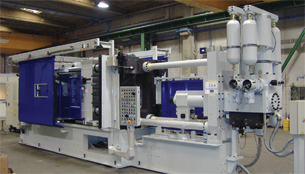Mechatronics Primer Reinventing Machine Design, 2 in a Series
Today's mechatronic methodology is a reflection of -- and an adaptation to -- changes that have transformed modern machines, enabling the quintessential synergy required to compete.
Latest News
February 2, 2009
By Tom Kevan
« Page 1 |2
A Mechatronics Roadmap
A recent study by the Aberdeen Group titled, “System Design: New Product Development for Mechatronics,” is based on the experiences of top-performing companies. It breaks down the migration path into incremental steps required to implement a mechatronics design process. The study first identifies six challenges that must be met:
• Counter the shortage of experienced system engineers and cross-discipline knowledge
• Identify system-level problems in the early stages of the design process
• Meet all design requirements in the final product
• Predict and model system behavior before the creation of physical prototypes
• Implement an “integrated product development solution” involving all relevant engineering disciplines
• Appreciate the impact of design changes on all engineering disciplines.
 Figure 4: EURO electronics used mechatronic methodologies and National Instruments’ programmable automation controllers and LabVIEW to design the control system of a hydraulic die-casting machine. The company shortened the development cycle to three weeks andenhanced the functionality of the system by adding machine diagnostics and custom HMI panels. Image courtesy of National Instruments |
To meet these challenges, the study recommends design teams to optimize communications (see Figure 3) and collaboration across all participating engineering disciplines; cultivate awareness of the status of system requirements; and optimize the team’s ability to simulate system performance before physical testing. To achieve these broad goals, Aberdeen suggests best practices that have been validated by the success of early mechatronics adopters. These procedures are based on the recognition that successful design takes into account the interdependencies among engineering disciplines.
These best practices can be boiled down to five core conventions:
• Conduct frequent formal design reviews throughout the entire development process that include all engineering disciplines, identifying design decisions that impart more than one discipline
• Document and communicate cross-disciplinary design issues
• Specify and communicate system performance metrics
• Collect, manage, and monitor design requirements throughout the development cycle
• Simulate and analyze system performance and identify problems and tradeoffs.
The Forces Driving Adoption
Many things are making the transition to mechatronic design necessary. First and foremost is the very survival of companies that design and manufacture machines. Customers demand flexible machines, enhanced and customized functionality, and shorter development cycles (see Figure 4). Companies can no longer afford to build many physical prototypes. All this comes down to the ability to compete.
Making mechatronic design a reality requires sea changes in the ways universities train engineers, vendors enable integration, and design teams work. Each of these elements involves its own set of challenges.
“The biggest hurdle is going to be the cultural change of getting the various engineering groups to work together,” says Craig Therrien, product manager at SolidWorks Corporation. “Once you have those people working together, they’re going to ask for tools that will help them do their job better. The success of companies using mechatronics will drive more companies toward the new methodology. What we are designing is changing. Things are becoming more mechatronic.”
Part 2 of this series about mechatronics will look at this new methodology from the individual engineer’s perspective, with practitioners of both the mechanical and electrical disciplines offering their takes on the new approach.
More Info:
Aberdeen Group
Boston, MA
Dassault Systèmes SolidWorks Corp.
Concord, MA
Marquette University
Milwaukee, WI
National Instruments
Austin, TX
University of California, Berkeley
Berkeley, CA
Tom Kevan is a New Hampshire-based freelance writer specializing in technology. Send your comments about this article to [email protected].
« Page 1 |2
Subscribe to our FREE magazine, FREE email newsletters or both!
Latest News
About the Author
DE’s editors contribute news and new product announcements to Digital Engineering.
Press releases may be sent to them via [email protected].






